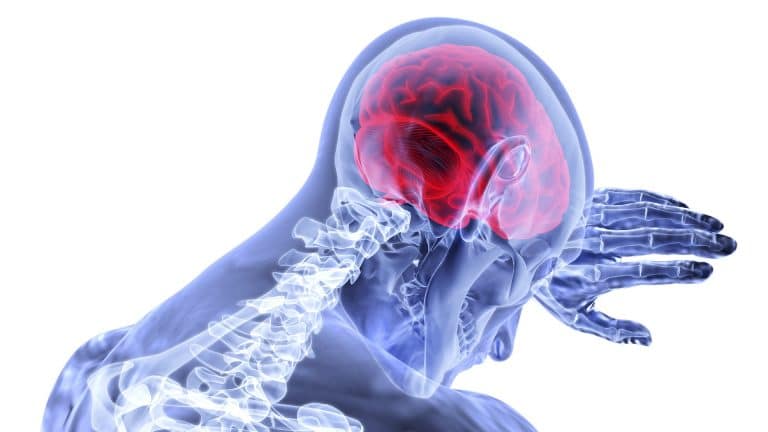26 Alzheimer’s Disease Facts & Statistics for 2024

Alzheimer’s, the most common type of dementia, is a general term used for neurodegenerative disorders that cause progressive cognitive decline. It includes problems with reasoning, communication, memory, speech, judgment, and many other aspects of daily functioning.
The symptoms manifest through several stages of Alzheimer’s and interfere with patients’ lives and the lives of their families. In the final Alzheimer’s stages, patients can cease responding to their surroundings, lose control over movement, and have difficulties eating and swallowing.
We’ve collected some of the most vital Alzheimer’s disease facts and statistics. After reading them, you should be informed enough to differentiate between Alzheimer’s and other related conditions.
Top 10 Alzheimer’s Disease Facts & Stats for 2024
- Dementia patients are twice as likely to get COVID-19.
- People with dementia are four times more likely to die from COVID-19.
- Alcohol can lead to dementia, Alzheimer's disease facts and figures reveal.
- In 2000–2013, there was a 71% increase in the number of Alzheimer's deaths in the US.
- About 5%–6% of Alzheimer's patients develop the disease before 65, as per Alzheimer's stats.
- The Alzheimer's brain shrinks down to a third of its standard size.
- Alzheimer's makes up 60%–70% of dementia cases, as per statistics of Alzheimer's.
- There is no link between a person’s cognitive reserve in midlife and a lower risk of Alzheimer’s.
- Statistics on Alzheimer's disease affirm that 6.2 million Americans have Alzheimer's.
- Alzheimer's may be responsible for over 500,000 annual deaths in the US.
Quick Facts About Alzheimer’s Disease
Over 6 million US citizens live with Alzheimer’s. Following that, it’s imperative that we educate ourselves on the condition. Read the section below to learn all the essential facts about the disease.
1. Brain atrophy causes significant loss of the brain in people with Alzheimer’s.
(NIH)
Facts on Alzheimer’s disease reveal that this can be observed in the last stages of the disease. More specifically, as neurons are injected and die in the brain, links between neurons’ networks can break down, shrinking brain regions.
2. The life expectancy of an Alzheimer’s patient is 3–11 years from the time of diagnosis.
(LIADC)
Be that as it may, some people live for 20 years or more. Overall, Alzheimer’s disease facts point to the importance of recognizing the extent of impairment and the progression of the disease at diagnosis. Generally, someone diagnosed early can have a longer life expectancy compared to someone diagnosed in later stages of the disease.
3. Your lifestyle might have an impact on the disease, facts about Alzheimer’s disease reveal.
(NIH)
It’s been found that people who stuck to several healthy behaviors showed 60% lower chances of developing Alzheimer’s. Those behaviors included not smoking, following a high-quality diet, engaging in physical activity, partaking in cognitive activities, and maintaining light-to-moderate alcohol consumption.
4. The Alzheimer’s brain shrinks down to a third of its standard size.
(Dementia Care Central)
Alzheimer’s disease facts unveil that the disease severely damages the brain. When we see a healthy brain, we can notice its “juicy” folds, situated close to each other. The brain folds of a person with Alzheimer’s disease are more narrow, and the gaps between the folds are considerably wider.
5. Brain lesions can be revealed even three decades before the onset of most typical Alzheimer’s disease symptoms.
(Science Daily)
According to a study conducted on nearly 300 participants by scientists from Johns Hopkins University School of Medicine, there’s some hope for the patients. Namely, there’s a chance of a much earlier diagnosis through scan-detectable and measurable spinal fluid and brain changes.
6. Medications that treat diabetes have several neuroprotective effects.
(Science Direct)
Alzheimer’s facts and figures break the news that type 2 diabetes increases the risk of dementia, including Alzheimer’s.
In addition, research proves that Alzheimer’s might be looked at as a metabolic disorder, just like diabetes. Because of this, the medications used for type 2 diabetes treatment may protect the brain.
7. Progress is continuously made in finding the best Alzheimer’s disease treatment.
(Mayo Clinic)
Alzheimer’s current treatments improve symptoms of memory loss, as well as thinking and reasoning issues, but only temporarily. With this in mind, future Alzheimer’s treatments might involve a combination of medications. Some of the ongoing treatment studies are focused on plaques, keeping tau from tangling, reducing inflammation, and researching insulin resistance.
Alzheimer’s Statistics Worldwide
The countries most affected by this condition are the US, Iceland, Norway, Finland, Netherlands, Canada, Denmark, Sweden, Belgium, and Switzerland, as per Alzheimer’s statistics by country.
Continue reading to learn more about the prevalence of the disease.
[visualizer id=”98555″]
8. Asia records the fastest-growing number of people with dementia.
(Alzheimer’s Disease International)
Besides the fact that people who have dementia live primarily in low- or middle-income countries, the Alzheimer’s rates worldwide also show that the number of people with dementia is growing fast in countries like China, India, and their neighboring countries. As for the countries with the lowest Alzheimer’s rates, they are India, Georgia, Cambodia, and Singapore.
9. As per 2020 Alzheimer’s disease facts and figures, 46.8 million people have Alzheimer’s or other forms of dementia.
(Alzheimer’s News Today) (Brain Test)
Compared to white people, African-Americans are twice more likely to have Alzheimer’s or other forms of dementia. As for Hispanics, they are around 1.5 times more likely to have some form of dementia.
Additionally, to understand the cost of Alzheimer’s, let’s make it represent a country’s economy—it would be the 18th largest in terms of the economic impact, between Turkey and Indonesia, based on Alzheimer’s disease statistics.
10. Every year, Finland records around 54 deaths due to Alzheimer’s and dementia for every 100,000 people.
(World Atlas)
As for what country has the highest rate of Alzheimer’s and dementia deaths, the answer is clear—that’s Finland. The US comes in second, with 46 deaths for every 100,000 people per year. Canada isn’t far behind, with 36 deaths for every 100,000 people per year.
11. Data on Alzheimer’s prevalence confirms that two-thirds of people with Alzheimer’s are women.
(NCBI)
As several studies have confirmed that the incidence of Alzheimer’s and dementia is higher in women than men, it’s speculated that the reason behind this is that women live longer lives on average. What’s more, studies from several European countries prove that women have a higher Alzheimer’s incidence after the age of 80.
12. In 2018, 16.5% of women died from Alzheimer’s or other forms of dementia in the UK.
(Dementia Statistics)
While statistics of Alzheimer’s disease uncover that in 2018, Alzheimer’s and other types of dementia were the number-one cause of death among women in the UK, men weren’t spared either. In other words, dementia was the second leading cause of death among men, with 8.7% of men succumbing to the disease in 2018.
Alzheimer’s Disease Stats in the US
Of 6 million Americans with Alzheimer’s, 72% are 75 or older. Sadly, statistics point to an increase in the condition’s incidence. As many as 11.3% of those aged 65 and older have Alzheimer’s. Continue reading to learn much more.
[visualizer id=”98561″]
Source: AJMC
13. In 2000–2013, there was a 71% increase in the number of Alzheimer’s deaths in the US.
(PubMed)
Every 66 seconds, someone’s brain manifests the symptoms of Alzheimer’s in the US. What’s more, statistics suggest that, by 2050, a new Alzheimer’s case will develop every 33 seconds, resulting in almost a million new cases per year.
14. Statistics on Alzheimer’s disease affirm that 6.2 million Americans have Alzheimer’s.
(TDSHS)
In Texas alone, around 400,000 people at the age of 65 have the disease. Additionally, Alzheimer’s disease demographics confirm that the condition is more common in women. It’s also been found that women die more from Alzheimer’s than men.
15. Alzheimer’s may be responsible for over 500,000 annual deaths in the US.
(BrightFocus Foundation)
As we can see, the data on Alzheimer’s disease death rate is quite disturbing. According to a study, the mortality rate might be five to six times higher than what official estimates originally suggested, making Alzheimer’s the third (and not sixth) leading cause of death in the US, right after heart disease and cancer.
16. In the US, the disease costs patients around $4,500 more compared to similar patients.
(BrightFocus Foundation)
Alzheimer’s patients require constant care, which costs a significant amount of money. By 2050, it’s expected that the total costs of healthcare (total health care payments, long-term care, and hospice) for people with all forms of dementia will increase to over $1.1 trillion.
Statistics of Alzheimer’s Incidence
Is it true that you’re less likely to develop Alzheimer’s as an educated person? Does alcohol consumption increase one’s risk for the condition? Get answers to the questions and learn much more about the incidence of the disease with the elaborate statistics below.
[visualizer id=”98563″]
Source: Alzheimer’s Association
17. There is no link between a person’s cognitive reserve in midlife and a lower risk of Alzheimer’s.
(Medical News Today)
In 2019, Alzheimer’s disease facts and figures backed by scientific studies unveiled the lack of correlation between the risk of developing the disease and one’s cognition in midlife. It’s important to note that researchers looked at associations, not at cause and effect relationships.
18. Mixed dementia is more common than previously thought.
(Alzheimer’s Association)
Patients with mixed dementia usually have brain changes of several causes, like Lewy bodies, Alzheimer’s disease, and vascular dementia. Furthermore, most people whose autopsies reveal they had mixed dementia had been diagnosed with only one type of dementia during their life—usually Alzheimer’s disease.
19. Alzheimer’s makes up 60%–70% of dementia cases, as per Alzheimer’s disease facts.
(WHO)
According to the World Health Organization, Alzheimer’s disease is the most common form of dementia. Other frequent types are Lewy body dementia (abnormal aggregates of proteins develop in nerve cells), vascular dementia, and several other diseases that contribute to frontotemporal dementia.
20. Alcohol can lead to dementia, as per Alzheimer’s disease facts and figures.
(Alzheimer’s Society)
Consuming alcohol excessively over a long period may cause brain damage and increase the chances of developing dementia. More specifically, heavy drinking can reduce the volume of the brain’s white matter, responsible for helping in the transmission of signals between brain regions. That way, there may be issues with brain function.
Be that as it may, facts about dementia and Alzheimer’s disease affirm that moderate drinkers are less likely to develop Alzheimer’s or other dementia than those who don’t drink alcohol at all.
21. Statistics about Alzheimer’s disease note that lack of sleep may cause a threefold risk of Alzheimer’s.
(WebMD)
While factors like exercise, cognitive activity, and a healthy diet have been widely recognized for helping prevent Alzheimer’s, sleep isn’t mentioned as often. That said, studies have found that people who are sleepy throughout the day have a risk of developing brain deposits of beta-amyloid, a protein linked to Alzheimer’s disease.
22. About 5%–6% of Alzheimer’s patients get it before 65, as per Alzheimer’s stats.
(Mayo Clinic)
It’s called young-onset Alzheimer’s, and it’s an uncommon form of dementia. According to Alzheimer’s disease statistics, of 6 million Americans with Alzheimer’s, approximately 300,000–360,000 have the young-onset form. In addition, these people develop symptoms of the disease between the ages of 30 and 60.
23. The causes of early-onset Alzheimer’s disease are linked to genetic factors.
(Mayo Clinic)
While the prevalence of Alzheimer’s disease’s young-onset isn’t linked to genetics, the familial Alzheimer’s young-onset is. Namely, the genetic young-onset Alzheimer’s is related to three genes—the APP, PSEN 1, and PSEN 2. Them differing from the APOE gene may increase your risk of Alzheimer’s in general.
COVID-19 and Alzheimer’s Facts and Figures
How has the pandemic affected people with Alzheimer’s? Are they at higher risk of contracting COVID-19? Read the section below to learn about that and much more.
24. Patients with dementia are twice as likely to get COVID-19.
(Forbes)
Statistics on Alzheimer’s suggest that people with dementia are generally more likely to contract the coronavirus. The risk is even greater for African Americans with dementia, who are three times more likely to get infected.
25. People with dementia are four times more likely to die from COVID-19.
(Forbes)
Nearly two-thirds of dementia patients with COVID-19 are hospitalized, compared to 25% of the general public. As for African Americans with dementia, that figure jumps to 70%.
Also, data on the mortality rate of Alzheimer’s disease reveals that more than 20% of patients with dementia died when they contracted the virus, compared to only 5% of people without dementia.
26. People with Alzheimer’s should get a COVID-19 vaccine.
(Alzheimer’s Association)
Vaccines are a crucial step towards ensuring the health and safety of people with the disease. The Alzheimer’s Association strongly supports and encourages getting the vaccines. It also emphasizes the importance of consulting the patient’s healthcare provider first.
Conclusion
By delivering the most important Alzheimer’s disease facts and stats, we hope to eliminate misconceptions regarding the disease. Hopefully, the information provided in this article will help recognize early symptoms. The sooner the disease is diagnosed, the easier it is to maintain a decent quality of life.
FAQs
What are the 7 stages of Alzheimer’s?
Below, you will find a brief overview of all seven stages of the disease.
- The initial stage. In this stage, patients are asymptomatic, but changes in the brain begin.
- The second stage. It’s characterized by minor memory problems.
- The third stage. In this stage, you may notice cognitive issues, such as trouble remembering the right words.
- The fourth stage. People might experience significant memory difficulties, like forgetting the person they are married to or the country they live in.
- The fifth stage. Patients have decreased independence, and there may be hallucinations, paranoia, and delusions.
- The sixth stage. A severe cognitive decline occurs, with the patient experiencing considerable personality changes.
- The seventh stage. Facts about the Alzheimer’s disease stages remark that the seventh stage records a lack of physical control. What’s more, the patient’s body shuts down, and their mind struggles to communicate.
How long does each stage of Alzheimer’s last?
The expected duration for the first and second stages of Alzheimer’s disease is unknown. The third stage lasts between two and seven years, the fourth is about two years, and the fifth stage lasts for a year and a half. Finally, the sixth stage lasts about two and a half years, and the seventh—one and a half to two and a half years.
What causes Alzheimer's disease?
Scientists still don’t fully understand what causes the disease. However, they know that brain proteins stop functioning correctly, disrupting the brain cells’ work and triggering many toxic events. Following that, neurons get damaged; they lose connections and ultimately die. All in all, scientists believe that for most people, Alzheimer’s occurs due to a combination of lifestyle, genetic, and environmental factors.
How long does a person live after being diagnosed with Alzheimer's?
The life expectancy of people with dementia varies by type. For instance, patients with Alzheimer’s have an average life expectancy of 10 years. People with vascular dementia, on the other hand, live for around five years after the diagnosis, and those with Lewy body dementia typically live for 2–8 more years.
What are the 10 warning signs of Alzheimer’s disease?
Warning signs of Alzheimer’s include:
- Memory loss disrupting daily life
- Challenges in solving problems or planning
- Facing difficulties in completing familiar tasks at home or work
- Time and place confusion
- Trouble understanding spatial relations and visual images
- Problems with words while writing or speaking
- Misplacing things and not being able to recall steps
- Poor judgment
- Withdrawal from work and social activities
- Mood and personality changes
When was Alzheimer’s discovered?
Alzheimer’s was discovered in 1906 by Dr. Alois Alzheimer, who noticed peculiar changes in the brain structure of a woman who’d died from a mysterious neurological illness. Her symptoms included language problems, unpredictable behavior, and memory loss. It would later be defined as what we nowadays call Alzheimer’s disease.
What population is most affected by Alzheimer's?
Over one in nine people aged 65 or older has Alzheimer’s disease. Overall, the percentage of people with this disease increases with age. For example, for people aged 65–74, the prevalence stands at 5.3%. Of those aged between 75 and 84, 13.8% have Alzheimer’s. As for people aged 85 and older, 34.6% of them have the disease.
How does Alzheimer's lead to death?
In the late stages, patients with Alzheimer’s usually have difficulty walking and, ultimately, lose the ability to walk. They may also have trouble eating or swallowing, and their inability to move around can make them more prone to infections, Alzheimer’s disease facts note.
To sum up, the disease itself isn’t commonly the direct cause of death, but the complications it brings about can certainly increase one’s risk of it.






